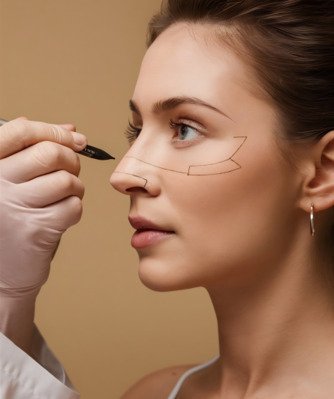Nasolabial Folds
What are Nasolabial folds (Laugh lines)?
Nasolabial folds are deep lines between the mouth’s corners and the nose’s sides. Commonly known as laugh lines or smile lines, these folds are a normal part of the facial anatomy. However, they tend to become more pronounced with aging and repeated facial expressions. At Genomed Clinic, we specialize in addressing nasolabial fold and other signs of aging with a range of effective treatment.

What causes Nasolabial folds to form?
There are several reasons why nasolabial folds become more prominent:
Many associate dark circles and hollow eyes with a lack of sleep or a hectic lifestyle. While these factors certainly can play a role, there are deeper causes behind these common concerns: Ageing: The skin loses elasticity and volume as we age, causing the under-eye area to sag or hollow out. Fat deposits beneath the skin also shrink, leaving more noticeable grooves and shadows. Lifestyle: Lack of sleep, dehydration, stress, and too much screen time can really make dark circles and puffiness worse. Smoking and poor dietary choices also take a toll on your skin, causing the under-eye area to look even more tired and worn out.While concealers and eye creams may offer temporary relief, they don’t tackle the underlying issue. Dermal fillers injections, however, can.
What causes Nasolabial folds to form?
There are several reasons why nasolabial folds become more prominent:
Reduction in elastin and collagen
As we age, the proteins that maintain our skin tight and plump, collagen and elastin, are naturally produced in smaller amounts by our skin. This loss of elasticity contributes to sagging and the formation of folds. The aesthetic Clinic offers advanced treatments against all these effects.
Gravity
The constant force of gravity acting on our skin is another reason that nasolabial folds occur. It can indeed make our skin droop and sag as we age, thereby exacerbating the lines.
Facial expressions:
Frequent expressions on the face such as smiling, frowning, and talking can contribute to the formation of nasolabial folds. Over time, these repeated movements can leave creases and lines on our skin.
Genetics
Our genes play a role in how our skin ages and where wrinkles appear. Some people are more prone to developing nasolabial folds than others.
Changes in Weight
Nasolabial folds can appear as a result of the skin becoming stretched and loosened due to sudden changes in weight.
Sun exposure
Sun exposure can damage the elastin and collagen in our skin, accelerating the aging process and making nasolabial folds more prominent.
Smoking
Nasolabial folds can appear as a result of the skin becoming stretched and loosened due to sudden changes in weight.
Stress
Stress can cause collagen breakdown, leading to wrinkles and saggy skin.
Can stress contribute to the formation of Smile Lines (Nasolabial folds)?
Stress negatively affects the whole body, including the skin. It can deepen nasolabial fold due to frequent muscle tension, repetitive facial expressions, and collagen breakdown. Genomed clinic recommends stress management techniques as part of a holistic approach to skin health.
Non-surgical treatments for Nasolabial folds:
Dermal fillers
Fillers that are injectable, like hyaluronic acid (e.g., Juvederm, Restylane), can be used to plump up the area, providing immediate volume and smoothing out the folds.
Laser treatments
Non-invasive laser treatments can resurface the skin, improving collagen production and skin elasticity, which can lessen the appearance of folds.
Radiofrequency and ultrasound treatments
These non-invasive treatments can tighten the skin and increase collagen production, helping to smooth out nasolabial folds. Morpheus and Ulthera are popular devices in this category.
Microneedling
Multiple tiny wounds are created in the skin with tiny needles that stimulate the formulation of elastin and collagen, allowing the skin to be softer and smoother.
Biostimulators
Injectable fillers that stimulate your body’s natural collagen production. This helps to restore volume and reduce nasolabial folds, improving skin texture and resulting in a more youthful appearance.
Sculptra
Made of poly-L-Lactic acid (PLLA), it helps improve nasolabial folds by stimulating elastin and collagen.
Radiesse
Made of calcium hydroxylapatite, it provides instant improvement by creating volume and sustained collagen production.
Thread Lifting
Long threads like PDO or PLLA threads can significantly lift the lower face, improving nasolabial folds. The aesthetic clinic offers expert thread-lifting procedures for long-lasting results.

Surgical treatments for Nasolabial folds:
There are also facelift options depending upon the severity of skin laxity. A modified facelift can be done to lift the cheeks and address the prominence of nasolabial fold with a small incision along the hairline. This approach is a conservative surgery with less visible sutures. On the other hand, mid-face surgical lift and full-face lift are other ways in more severe cases. An endoscopic face lift could be another option to correct mid-face laxity and nasolabial folds.
Frequently Asked Questions
Are there any side effects from treating Nasolabial folds with fillers or Botox?
Various treatments can improve nasolabial fold, each with different possible side effects. Dermal fillers are considered very safe when administered by experts. However, temporary side effects like swelling, bruising, and redness at injection points are common. Improper injection techniques or low-quality fillers can cause lumps. More severe complications like skin necrosis or infection can occur in rare cases. Genomed Clinic emphasizes that these procedures should be performed by qualified dermatologists and licensed health practitioners to minimize risks.
Is it possible to completely remove Nasolabial folds (laugh and smile lines)?
Nasolabial folds or smile lines are normal part of the facial anatomy. However, these lines become a cosmetic concern due to the deepening and pronouncement of the grove which creates permanent wrinkles. There are treatments available that can reduce and improve the appearance of the wrinkles; however, it is impossible to completely remove the nasolabial fold.
Can facial exercises help reduce nasolabial folds?
Facial exercises are one of the medically accepted ways to potentially smooth out smile lines, including nasolabial folds. The principle behind these exercises is that by engaging and strengthening the facial muscles, you might improves skin firmness and reduce the depth of these lines. While facial exercises might offer some improvement, they are seen as less effective than other treatments like dermal fillers or laser therapies for more significant results. There is limited scientific evidence to support the effectiveness of these exercises in fully reducing deep lines.
Smile Lines treatment aftercare and maintenance:
Aftercare and maintenance may vary depending on the treatment performed on the client. Meanwhile, sun protection constitutes all aftercare regimens regardless of the procedure performed. Limiting sun exposure, and UV damage delays aging which prevents the smile line from becoming more visible. In addition, effective skin care regimen can maintain good skin quality such as moisturizers and retinols.
Can Nasolabial folds (laugh lines) be prevented?
Preventing nasolabial lines involves a mix of proactive skincare, healthy habits, and professional interventions. Incorporating these approaches helps improve overall skin health and delays the early signs of aging. Genomed Clinic recommends the following to prevent the deepening of smile lines:
- Antioxidant enrichment: Free radicals and other environmental stresses like pollution can cause skin aging, but antioxidants can help shield the skin from them. Vitamin C, in particular, supports collagen synthesis and brightens the complexion.
- Adequate hydration: Proper hydration supports skin elasticity and helps flush out toxins that can negatively impact skin health.
- Facial massage: Gently massage the areas around the nasolabial folds using your fingertips in upward, circular motions. This can help improve blood flow and relax the muscles, reducing the prominence of the lines over time.
Various treatments can improve nasolabial fold, each with different possible side effects. Dermal fillers are considered very safe when administered by experts. However, temporary side effects like swelling, bruising, and redness at injection points are common. Improper injection techniques or low-quality fillers can cause lumps. More severe complications like skin necrosis or infection can occur in rare cases. Genomed Clinic emphasizes that these procedures should be performed by qualified dermatologists and licensed health practitioners to minimize risks.
Nasolabial folds or smile lines are normal part of the facial anatomy. However, these lines become a cosmetic concern due to the deepening and pronouncement of the grove which creates permanent wrinkles. There are treatments available that can reduce and improve the appearance of the wrinkles; however, it is impossible to completely remove the nasolabial fold.
Facial exercises are one of the medically accepted ways to potentially smooth out smile lines, including nasolabial folds. The principle behind these exercises is that by engaging and strengthening the facial muscles, you might improves skin firmness and reduce the depth of these lines. While facial exercises might offer some improvement, they are seen as less effective than other treatments like dermal fillers or laser therapies for more significant results. There is limited scientific evidence to support the effectiveness of these exercises in fully reducing deep lines.
Aftercare and maintenance may vary depending on the treatment performed on the client. Meanwhile, sun protection constitutes all aftercare regimens regardless of the procedure performed. Limiting sun exposure, and UV damage delays aging which prevents the smile line from becoming more visible. In addition, effective skin care regimen can maintain good skin quality such as moisturizers and retinols.
Preventing nasolabial lines involves a mix of proactive skincare, healthy habits, and professional interventions. Incorporating these approaches helps improve overall skin health and delays the early signs of aging. Genomed Clinic recommends the following to prevent the deepening of smile lines:
- Antioxidant enrichment: Free radicals and other environmental stresses like pollution can cause skin aging, but antioxidants can help shield the skin from them. Vitamin C, in particular, supports collagen synthesis and brightens the complexion.
- Adequate hydration: Proper hydration supports skin elasticity and helps flush out toxins that can negatively impact skin health.
- Facial massage: Gently massage the areas around the nasolabial folds using your fingertips in upward, circular motions. This can help improve blood flow and relax the muscles, reducing the prominence of the lines over time.
Conclusion
Nasolabial folds are a normal structure of facial anatomy, becoming more visible and prominent due to aging and other contributing factors. Treatment of nasolabial fold can help individuals achieve their cosmetic goals. Dermal fillers are considered first-line treatments for improving laugh lines. Genomed clinic would suggest you consult with a qualified doctor to discuss treatment options and understand possible risks and expected outcomes based on individual skin type and age before undergoing any treatment.
WhatsApp Contact us WhatsApp Contact usYou May Also Like
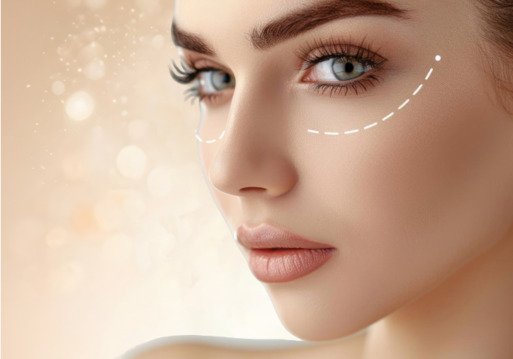
Thread lifting
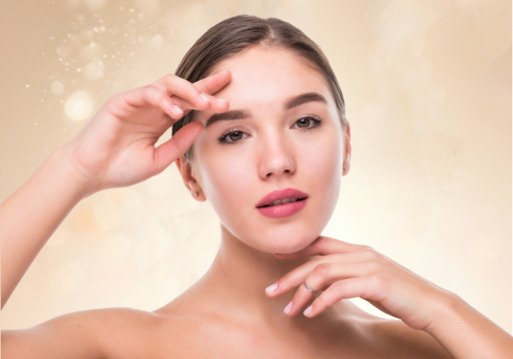
Attiva Treatment
Other Category
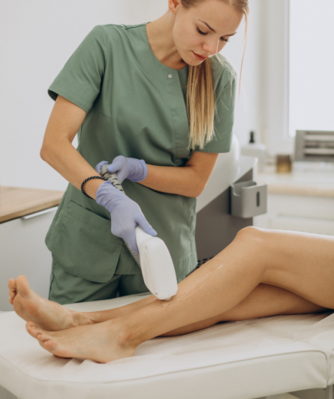
Laser Hair Removal
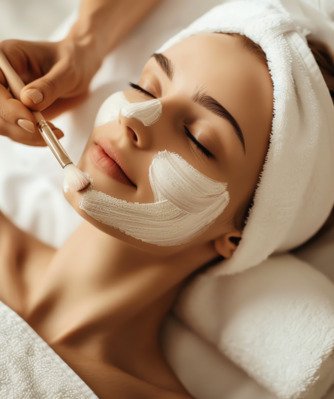
Facial
